|
William Harle was station-master at Heddon on the Wall Railway Station between 1898 and 1906. It has been said that he planted 13 trees at the station, one for each of his children. As pointed out on Disused Stations a line of trees extends east of the platform buildings on a photograph from 1910 shown below. The line of trees is also visible in historical aerial imagery for 1945 on Google Earth. The railway line runs from left to right across the photo. The Newcastle platform lies east of the level crossing which provided access to the Station-master's House and fields to the south. The platform was on the north side and I can count 14 or 15 trees extending to the east on the extract below. The station was staggered and the platform for travellers to Wylam was just west of the level crossing, close to the Station-master's House. There is a line of mature sycamore trees along the boundary in this location today but now many more trees have grown up both west and east along the line of the Wylam Waggonway, and an exact count is not easy. The Station-master's House is still in use as the farmhouse of Heddon Haughs Farm, located at the bottom of Station Road, just to the north of the station, although the building has been much extended and altered A newspaper clipping shown below describes how 14 trees were planted in commemoration of his 14 children, to mark the Coronation of King Edward VII. The 1901 Census records William Harle (aged 46), wife Margaret (44), and 8 children: Ethel May (17), Isabella (15), Margaret (13), Lillian (10), William (8), Mabel (5), Sidney (2) and Ernest Edward (0). The Census fails to record the number of rooms in the Station Masters House but lodging with them at the time was a William W Watson (23), Railway Signalman (born in Newcastle). I was pleased to have recently received more information about William Harle and his family from his great grandson, Brian Harle, who has kindly let me reproduce it here. 5b2 William (1854-1913) The previous section on his father George (6b3) indicates the poor living conditions to which this family had been reduced since the break up of Corridge. His birth certificate shows he was born at New Cassop, which lies a few miles south east of Durham City. The family had moved to Trimdon by 1859 when his sister Mary was born and there was a church school here so he would probably have some education, the School Board Act was not introduced until 1870. The 1871 census shows him working as a stoker at Usworth Colliery at the age of 16 years. He must have obtained work on The North Eastern Railway soon after this as his marriage certificate dated 1875 gives his occupation as Block Instructor. By the last quarter of the 19th century the laying of railway lines all over the country was almost completed and travelling by rail was so well established that a large number of trains was using each line and several accidents were occurring, According to W W Tomlinson's book "The North Eastern Railway" there had been several of these accidents on the NER in the 1860's due to incorrect signalling and experiments were being carried out with a system of block signalling designed to prevent any train entering a section of the railway which already has a train on it. As a result of serious accidents at Thirsk in 1869 and at Brockley Whins near Boldon, in 1870 it was decided in May 1871 to apply the block system to the whole of the NER system and "To arrange for the establishment of classes in which pointsmen, signalmen and other servants of the company might be instructed and trained to perform efficiently the duties required of them," It is assumed that the NER advertised for men to be trained as instructors and William was one those selected and hence is designated a 'Block Instructor' on his marriage certificate. He and his bride Margaret Ann Mariner lived close together as the 1871 census shows their families adjacent to each other:- At 57 Old Engine Matthew Mariner Head 39 Coal Miner Birtley Isabella Mariner Wife 33 Washington Margaret Ann Mariner Daughter 14 Washington Thomas Mariner Son 9 Scholar Washington Jonas Mariner Son 5 Washington Robert Mariner Son 3 Washington At 58 Coxons Row, Usworth George Harle Head 45 Labourer Witton Gilbert Isabella Harle Wife 38 Pelton Robert Harle Son 18 Labourer Cassop William Harle Son 16 Stoker Cassop Mary Harle Daughter 12 Trimdon The first child was born four months after their marriage, so the addresses on the certificate are probably false, and was used to avoid having the banns read at the local church, few neighbours at Washington would hear any details of weddings at North Shields in those days. It will be seen that Margaret's father was a labourer but it is known from the previous census that he had been a coal miner and was born at Birtley, her mother was Isabella and some idea of Margaret's family can be obtained from these extracts from a letter from Mabel Topping (nee Harle) c1971. "I'm afraid I do not know much about my father really. I was only a small child, about seven when he remarried. I cannot remember any of his people coming to stay or even hearing of them. He had one sister, Mrs Hall who I met once she lived at Low Fell if I remember rightly. Both my mother and father came from the same village, Usworth near Washington, My mother Margaret Ann Mariner had three brothers Jonas, Thomas and William and a sister Mrs Rutherford who lived in Jesmond. I knew uncles Thomas and William's families very well, they were very good to me, they all lived around Washington and their families live there today. My maternal grandmother, when I knew her was Mrs Pringle having remarried. Uncle Jonas was manager of a working men’s club in Usworth or thereabout. I only met him in 1936." The first child mentioned above was Mary Alice born at Brandy Row Washington on the 7 December 1875 and the certificate gives William's occupation as signalman, it was quite common for women to go home to mother to have the first child so William and Margaret may have had a home away from Brandy Row perhaps a railway house. By the February of 1881 the family had moved to Harvey Street in Heaton, Newcastle Upon Tyne, William is still a signalman but will have been upgraded and is probably in one of the larger signal boxes on the main London - Edinburgh line. They lived in Harvey Street until 1889 when they moved to Tynemouth Road not far away. It can be assumed that William had a few promotions during the ten years they lived at Tynemouth Road as his next move was when he was appointed stationmaster at Heddon on the Wall, quite an important position in those times when the railways were the most important means of transport. It must have been a great blessing to Margaret to have a large detached railway house after living in a small terrace house, since by this time their family had grown to ten, seven girls and three boys, the oldest only fourteen years of age. The railway is long since gone but the station house is still occupied and was only recently modernised. Margaret had one more child, Ernest Edward in 1901, the last to have a tree planted in his name as shown in a cutting from the Hexham Courant. (The original dated 19 August 1903). She did not have the pleasure of living in the large house for very long as she developed pneumonia in the first days of 1903 and died of heart failure on the 13th January. They had fourteen children in the twenty years of their marriage, three had died and the oldest two were married leaving William with nine still to be looked after. From Mabel's letter (op cit) it would seem that Margaret's family were very helpful with the younger ones and may have had some of them to stay at Usworth. As a stationmaster William may have had domestic staff but even so the long-term solution to his problem would be to employ a nanny. It is thought that Mary Henderson was chosen for this position but whether this is true or not William was definitely married to her before the year was out. Mary Annie Henderson was the daughter of Luke and Jane and was baptised at Whittingham Parish Church, Northumberland, Octavia Annie, it is not surprising that she changed the first name to Mary when she was a few years older. Luke's first wife Margaret was a local girl and they were married at Whittingham but his second marriage to Mary's mother Jane took place elsewhere and the certificate has not yet been found. Mary's address on the certificate is Glanton, which is close to and in the parish of Whittingham and could be where her mother was living so if her brother and sisters were still in the area her family would be well represented at her wedding. Mary was fifteen years of age when her father died so she should have remembered his name and occupation, which for some reason are omitted from the marriage certificate. Not long after his second marriage William added a codicil to his will omitting his daughter Lilian out of any benefit. She left home and went to live with her mother's family, whether she left of her own free will or was forced to leave is not known but all the older children also left home as soon as it was conveniently possible. Matthew immediately went to live with his sister Kate, married and living in the west end of Newcastle, and Margaretta left home and went into service at Ebchester, Alice and probably Ethel were already married. Isabella if not married at this time was married soon after but she kept in touch with the family as a postcard dated April 1908 confirms. The postcard is from William who is 15 years old and still at home, to Barbara Watson a sister of Isabella's husband. The family moved to Appleby c1906 and William was stationmaster here until 1913, when he retired due to ill health and moved back to Newcastle. He died at Bolingbroke Street, Heaton in May of the same year and their last child was born some months later. Mary and the family continued to live in Heaton until about 1925 when they moved to a farm at Blencarn, at the foot of Cross Fell in Cumbria, Mary died at Barningham in Yorkshire in February 1947 at the age of 72 years. William and his two wives had 18 children 4a1 to 4a18. Information provided by Elizabeth Hogson
January 2022 I have just re-read your article on William Harle and am keen to have the correct information regarding his second wife recorded. Mary Henderson was the daughter of Isabella Henderson who was born at Wandon, nr Wooler in Northumberland ( I have Isabella’s death certificate on which it states that the informant was William Harle her son-in law). At the time of Mary’s birth Isabella was unmarried. Further information on the wedding certificate dated 23rd September, 1903 are the witnesses – Margaret Henderson her sister, James Walker her uncle (married to Isabella’s sister Mary) and Mary Luckley. Mary is the grand-daughter of James and Mary Walker, her mother being Margaret Ann Walker who married Thomas Luckley. My great grandmother is Margaret Henderson sister of Isabella and Mary. Some photos of North Wylam Railway Station kindly supplied by David Payne.
Accidental death of William Weddell of Gallowgate, Newcastle, labourer following accident at Heddon Banks on the Wylam Waggonway in 1862. Death in 1878 of a boy, Henry Harding at Heddon on the Wall after drinking whiskey with two friends. Three workmen severely injured in gun-powder accident at New Quarry, Heddon on the Wall in 1879: Henry Garnett (Walbottle), Hutton Robson (Heddon), and a man named Andrew living at Blue Bell. John Waddell (1828-1888), described as the operator of the New Quarry at Heddon, was a Scottish-born railway contractor based in Edinburgh. He ran the enterprising and respected firm John Waddell and Sons and went on to complete many routes during the rise of the railways across England during the late 19th century, especially for the NER. Notable examples of his work include the rebuilding of Putney Bridge in London (1882), the Scarborough and Whitby Railway, completion of the Whitby Redcar and Middlesbrough Union Railway and the Mersey Railway Tunnel. Two reported fatal accidents at Heddon Colliery: Robert Simpson (25) conveying clay from colliery to brickworks by pony in 1885, and J Jameson (stoneshifter) in 1893. Robert Lowery, Deputy Overman at Heddon Colliery, killed by stonefall in 1911.
My friend, Les Turnbull, is conducting research at the Mining Institute on the work of the notable Colliery Engineer, William Brown who was based for time in Throckley. Every now and then he sends me interesting nuggets of information about our local waggonways that keep my spark of interest in that subject alive. This time his message was: Recently, I was asked to comment upon a manuscript that was sent into the MI from a former pitman who was born in Throckley and I quote below an extract for your interest and comments. The waggonway in question is shown on the plans of Throckley shown below. The earlier plan (left), although unlikely to be anywhere as early as 1713 as suggested, shows a waggonway crossing the Military Road (which was only completed in the 1750s) from south-east to north-west, west of the Newburn Road junction. In a big single field north of the road, named as 'West Leagure', it served two pits, Honey Pit and Meadow Pit, the latter situated just west of a group of buildings annotated as 'Browns House'.
Several pits are also shown in 'Maddies Pasture' west of Drove Road and in 'Quarry Field' to its north, but no waggonways are shown serving them. On an plan from Alnwick Castle dated 1755, a waggonway is shown, parallel to and on the south side of the Military Road, branches heading north-west and south-west from a point close to the Drove Road junction. On the 1769 plan, 'Leagure' has been subdived into four fields, 'Ligger'. A waggonway crosses the Military Road as above but on the north side, in 'South Ligger', it branches. One branch heads west past New Engine Pit in 'South West Ligger', then north-west, crossing the Drove Road, to Duke Pit, situated then just beyond the enclosed land on what was Throckley Common. The other branch runs to the north between 'North West Ligger' and 'North Ligger', where Hill Pit is shown, to Meadow Pit, then located in another enclosure named as 'Fell Bulls Close'. At this time, Throckley village was located south of the Military Road at Bank Top, connected to its Common by the Drove Road. The waggonway to Meadow Pit is also shown on 'A Plan of the Inclosed lands of Throckley' of 1781 (NRO ZAN M17/197/A/37). The waggonway is not shown on the 1st edition Ordnance Survey map of 1858 so was presumably out of use by this date. This article was put together to further illustrate the fine talk on the Alston Branch Line given to the Heddon Local History Society on Monday 9th February by John Gillott. Introduction from WikipediaThe Alston Line was a 13.5-mile (21.7 km) standard gauge branch line railway that operated in the counties of Northumberland and Cumbria in England. Starting at its junction with the Newcastle and Carlisle Railway line at Haltwhistle, the line ran to the town of Alston. An 1846 Parliamentary Act authorised a line as far as Nenthead, providing an outlet for the lead mines in the Alston area, and plans were made to connect with railways further south. When the decision was made to terminate the branch at Alston, a further act was needed in 1849.
Initially the line opened in stages: from the junction to Shafthill (later renamed Coanwood) in 1851, and from Alston to Lambley in 1852. The full opening of the line awaited the construction of Lambley Viaduct, and was achieved later in 1852. Quarrying of sandstone, which outcrops around the village, especially on the Common, for building puposes probably had a long history in Heddon on the Wall. In Roman times, a local source of quality stone would have been needed both for the curtain wall, its associated milecastles and turrets, and nearby forts. In later times, where Roman stone couldn't be reused, local quarrying would have supplied material to build houses, farmsteads and the church. Much of the structure of the old vilage is stone built. The Romans were well aware of the quality of the stone from the Heddon quarries for as well as its use in building Hadrian's Wall, it was transported down river for use in the forts of Segedunum (Wallsend) and Arbeia (South Shields). It was used in particular for special quality masonry, including stones for dedications and altars. It was used for the colonnades of the headquarters building, the drains and the huge strong-room blocks beneath the Sacellum. The vicar and churchwardens of St Andrew's registered their right to remove stone from the whole of Heddon Common for the repair of the church and other buildings and walls owned by the church. The Civil Engineer and Architect's Journal (1839) p.379 records that St Nicholas' Cathedral in Newcastle was built in the 14th century in stone very similar to that from Heddon quarry but much decomposed. Parts were restored in the 18th century with the same stone, already decomposing. It has been shown that sandstone from Segedunum and Arbeia, originally quarried by the Romans, was reused in the Anglo-Saxon and Anglo-Norman phases at St Paul’s, Jarrow and at St Peter’s, Wearmouth (Wearmouth & Jarrow: Northumbrian Monasteries in an Historic Landscape by Sam Turner, Sarah Semple, Alex Turner, 2013). Perhaps that used in St Nicholas' Cathedral had a similar origin. Some details of the transport of stone from Heddon quarries in the waggonway era has recently come to light thanks to the research of Alan Clothier in his book, Beyond the Blaydon Races.
A new book on the collieries, waggonways and railways of Wylam, Heddon, Throckley, Newburn, Walbottle, Hollywell, Lemington and Callerton by Alan Clothier. The area covered by this book is mainly that of the five waggonways delivering coal to their staiths on the River Tyne at Lemington from collieries at Wylam, Heddon, Throckley, Walbottle, Hollywell and Black Callerton. The main objective has been to place the early wooden waggonways fully in the context of their purpose and usage within the mining industry and continues with their development and the coming of railways up to the demise of the coal industry in that district. There is a more detailed insight into the multifarious activities of Colliery Viewers whose work it is felt has not always received the attention which it deserves. For much of this feature, the author is indebted to the wonderfully detailed work diaries of William Oliver held by the North of England Institute of Mining and Mechanical Engineers. The opening date for the Wylam Waggonway has long escaped the notice of historians and many well-known writers have had it wrong; the author is pleased that his researches have at least narrowed it down to the year in which this event occurred. A Glossary of Terms used in the mining industry is also included as well as numerous plans and a Chronological Listing of Events.
I put the slide show together after a talk to Heddon Local History Society by John Gillott on Monday 19th May 2014. John's talk inspired me to see the remains of the line and its existing bridges and buildings for myself. Until I find time to do that I decided instead on this virtual tour of the line using existing photographs on Geograph. The photos run from south to north, are by several different contributors, and taken on different dates, although most of them are fairly recent. If you want a map to follow the route for yourself, there are none better than on Where's The Path. The OpenRailwayMap now contains many of the lcoal lines, disused or otherwise. Click on the individual photos for further details, and to find other photos in the same 1km grid square. The photos are Creative Commons Licensed with full details on each Geograph page. There is some stunning photography here - a beautiful record of an old railway line which ran through a deserted and most beautiful landscape. Many thanks to the photographers. I hope you have as much enjoyment looking at it as I had in selecting the photos and putting it together. The Border Counties Railway was incorporated in 1854 and was absorbed by the North British Railway (NBR) on 13th August 1860. It linked the Newcastle and Carlisle Railway, near Hexham, with the Border Union Railway at Riccarton Junction.
Walbottle Moor Waggonway is known to have been in operation from 1769. This Waggonway ran from old pits north of Hexham Road past the location of Duke Pit in Walbottle down to coal staiths on the River Tyne at Lemington. The network is one of the last surviving examples of an 18th century waggonway to survive in Newcastle.
The system was still in use in 1860, using horses and employing 50 keelmen at the riverside staiths for transport down river. This now disused network provides the village of Walbottle with picturesque paths allowing easy access to the surrounding countryside. These waggonways also have historic importance due to their connection with railway pioneer George Stephenson, who as a boy worked on them as a fireman and horse driver. |
AuthorAndy Curtis Archives
July 2024
Categories
All
|
- Home
- Calendar
- Introduction
- Where are we?
- History Map
- Timeline
-
Heddon's History
- Prehistory
- Hadrian's Wall >
-
Six townships
>
-
1 Heddon township
>
- Heddon in the Middle Ages
- Common Land
- Middle Marches
- Tithe Award
- St Andrew's Church >
- Village property
- Heddon Hall >
- Heddon Banks Farm
- Frenchman's Row
- Methodist Church >
- Men's Institute
- Women's Institute
- Welfare Field
- Knott Memorial Hall
- Memorial Park
- Schools
- River Tyne
- Coal Mining
- Quarrying
- Water Supplies
- Transport
- Waggonway & Railway
- Occupations from 1800
- Miscellaneous
- 2 West Heddon township
- 3 East Heddon township
- 4 Houghton & Close House township >
- 5 Eachwick township
- 6 Whitchester township
-
1 Heddon township
>
- Rudchester
- People
- Old Photos
-
Old News
- Community News
- Letter from the Emigrant Clergy of Frenchman's Row (1802)
- Alleged Brutal Murder at Heddon-on-the-Wall (1876)
- Sad boat accident at Ryton (1877)
- Coronation tree (1902)
- 65 Years on a Ferry Boat (1929)
- Come claim your kiss at Heddon (1953)
- The Swan (1972)
- Heddon WI (1987)
- Church House (1966)
- Happy return (1993)
- Hexham Courant (1997)
- Butterfly Garden (1999)
- Foot & Mouth (2001)
- Remembrance Day (1996)
- Remembrance Day (2016)
- RAF at Ouston (2007)
- Close House Golf Course (2009)
- Heddon pupils celebrate British heritage (2011)
- Roman Wall Forge (2011)
- Diamond Jubilee (2012)
- Auction of Bronze Statue, Close House (2012)
- Heddon WI (2012)
- Puffing Billy Festival (2013)
- Heddon Village Show (2014)
- View of the North (2014)
- The Wall at Heddon (2014)
- Heddon Village Show (2015)
- War veterans singing send-off (September 2015)
- Anglo-Saxon history (2014)
- Heddon WI at 100 (2017)
- Hadrian's Wall discovery (2019)
- Tulip Mews (2020)
- Mike Furlonger
- Hadrian's Wall 1900 Festival
- Memories
-
Other documents
- Mackenzie (1825)
- Bates (1886) >
- History, Topography & Directory of Northumberland (Bulmer's) - 1886
- History of Northumberland (1930)
- Collingwood Bruce (1853)
- Whellan (1855)
- Post Office Directory (1879)
- Prominent people in Heddon
- Place names
- Ad Murum
- Archived documents
- Thomas Bewick's History of British Birds (1826)
- Census data 1801-1991
- Historical Records 1888-1890
- Knott Sale of Village Property (1924)
- Extracts from Parish Council Records
- Local colliery records
- Blackburn (1938)
- Clark (c.1963)
- History of Church (1968)
- Boundary Commission Report 1984
- Village Atlas 2022
- Walks
- Blog
- Contact us
- Links
- What's new
- Site search
- Past & Present
- Photo of the Month
- Place Name Studies
- Heddon from Above



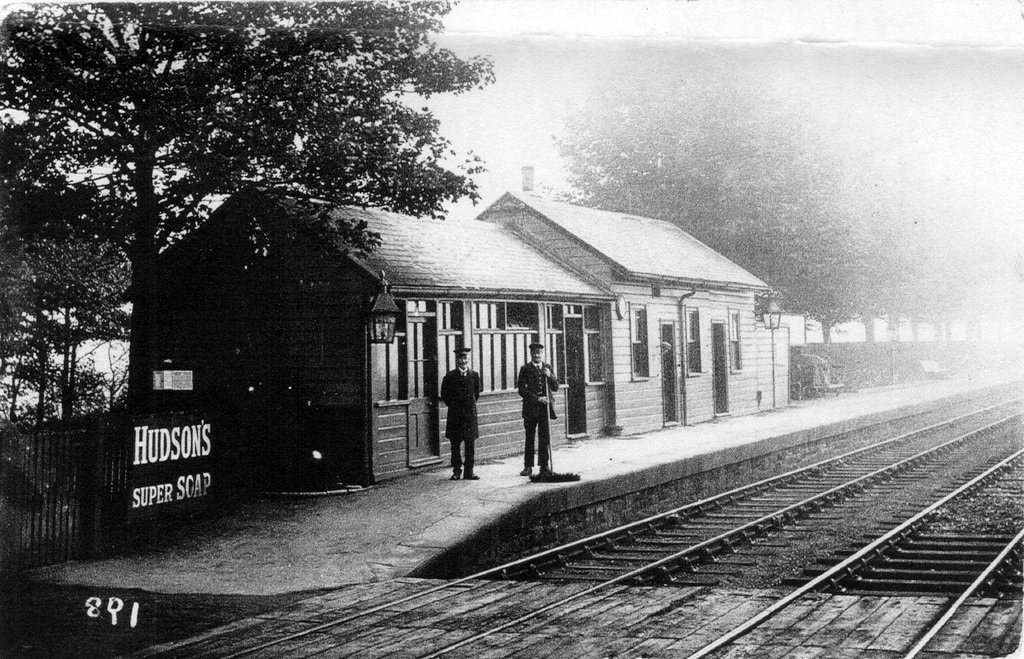



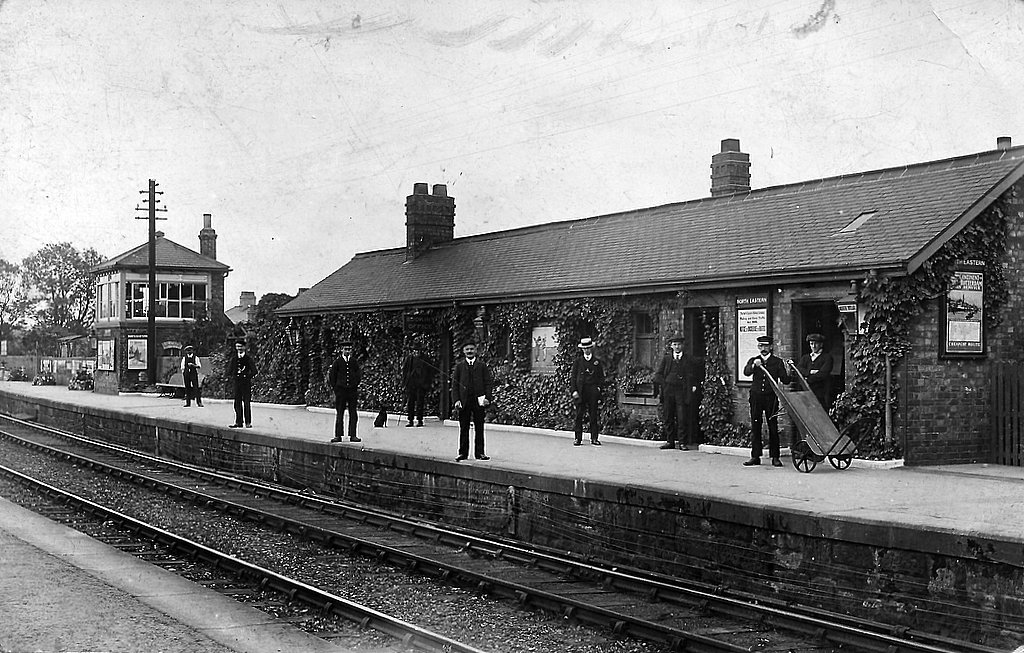
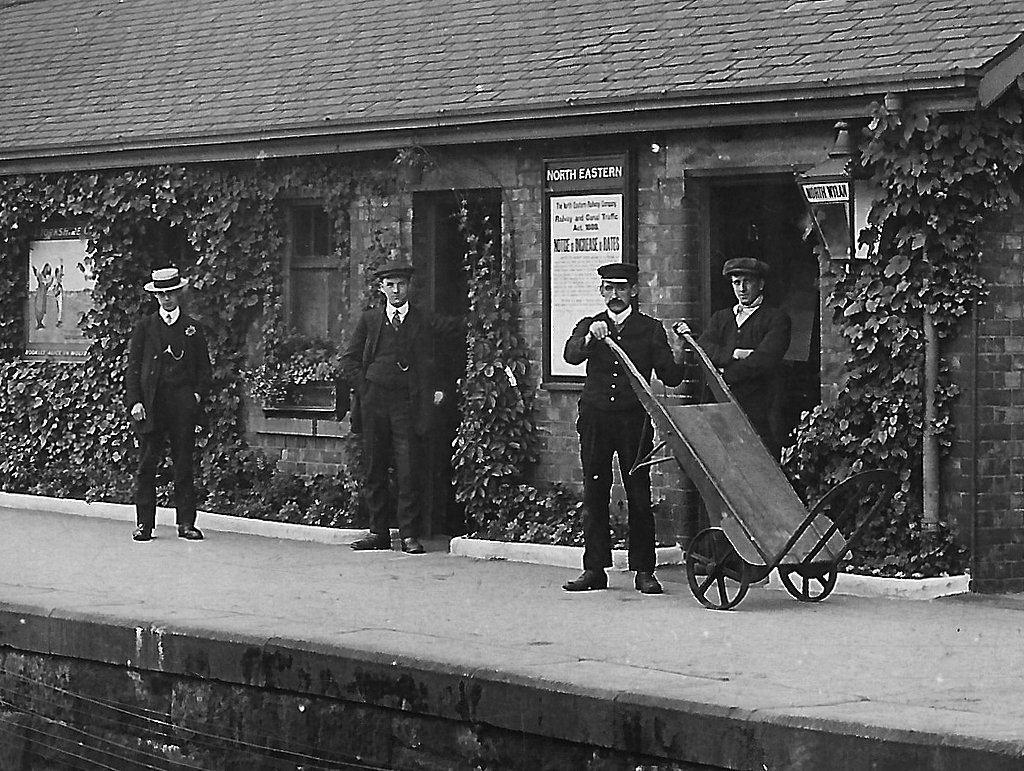
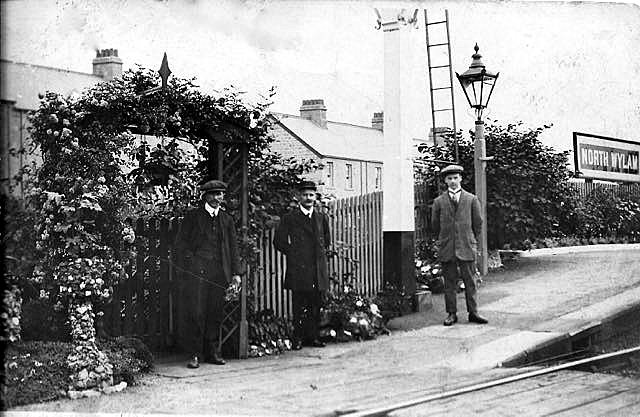
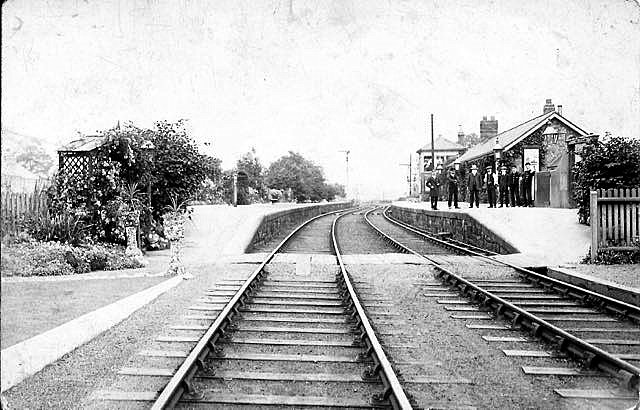
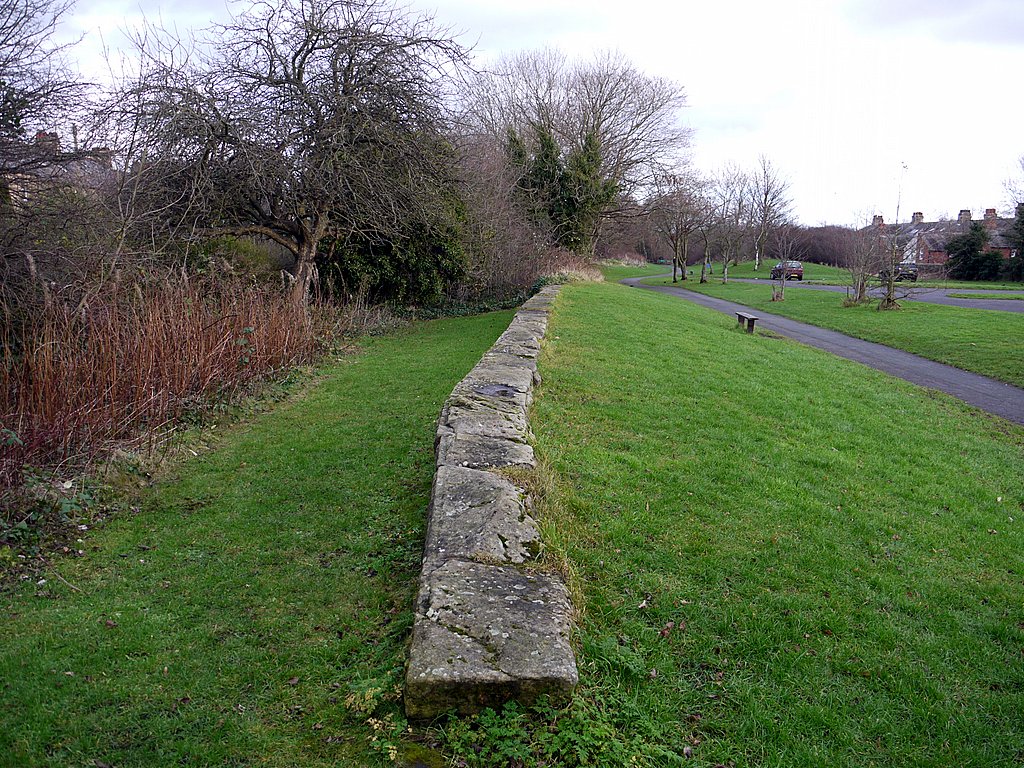
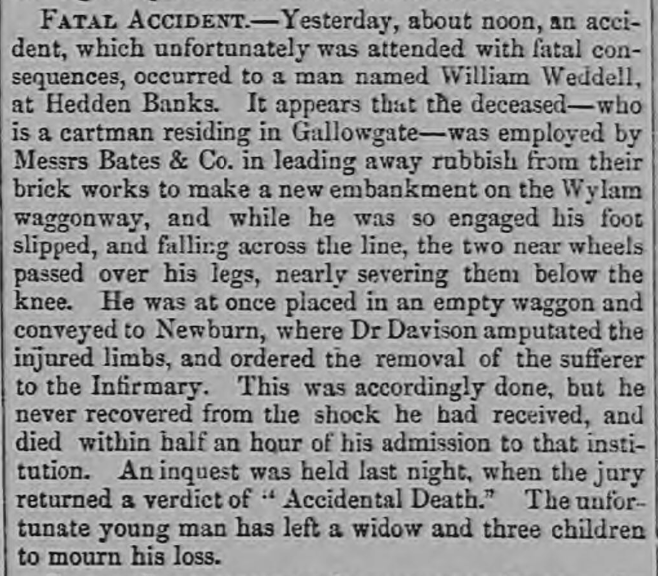
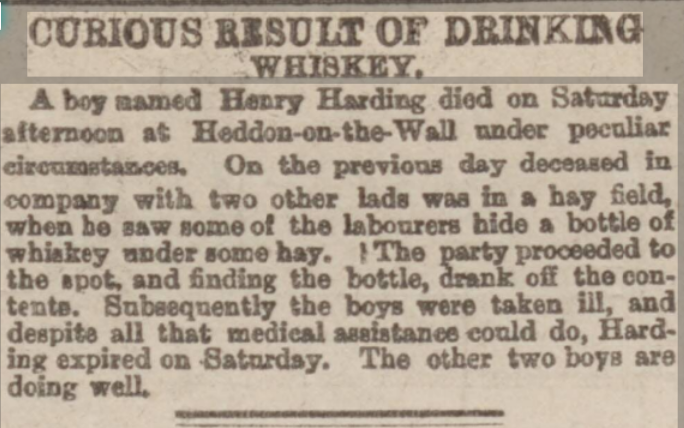
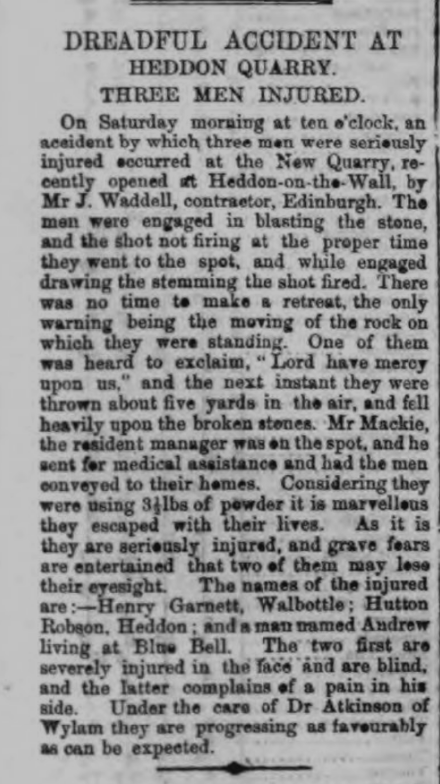
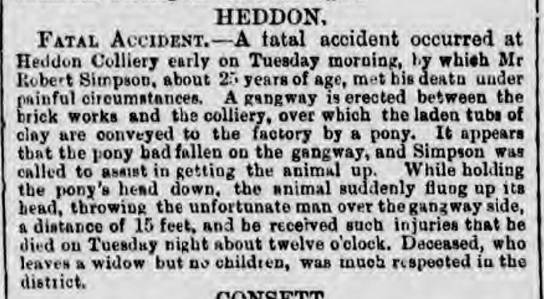
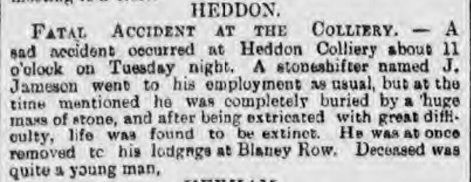



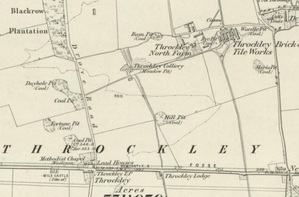
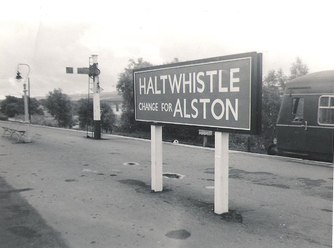
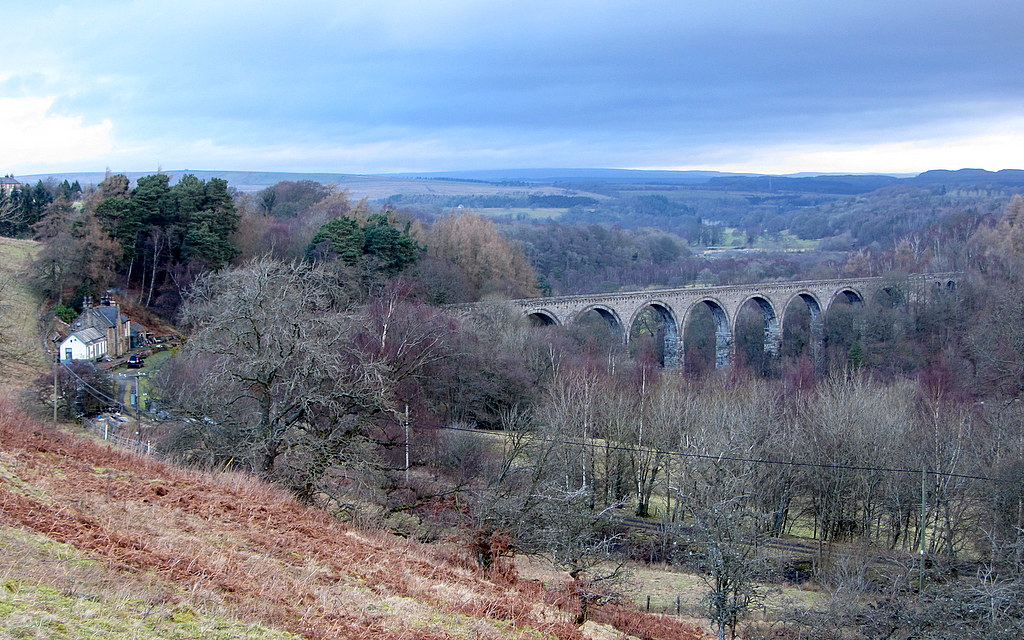
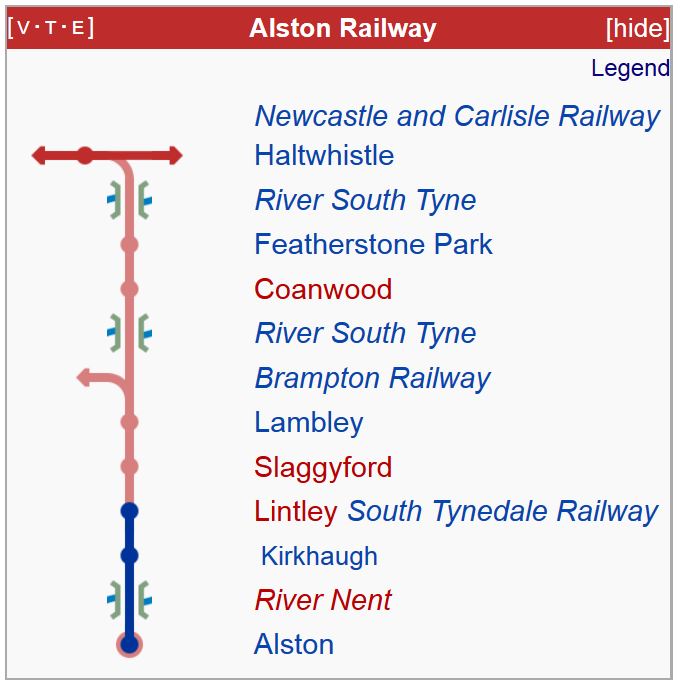

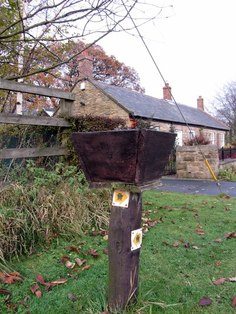
 RSS Feed
RSS Feed
